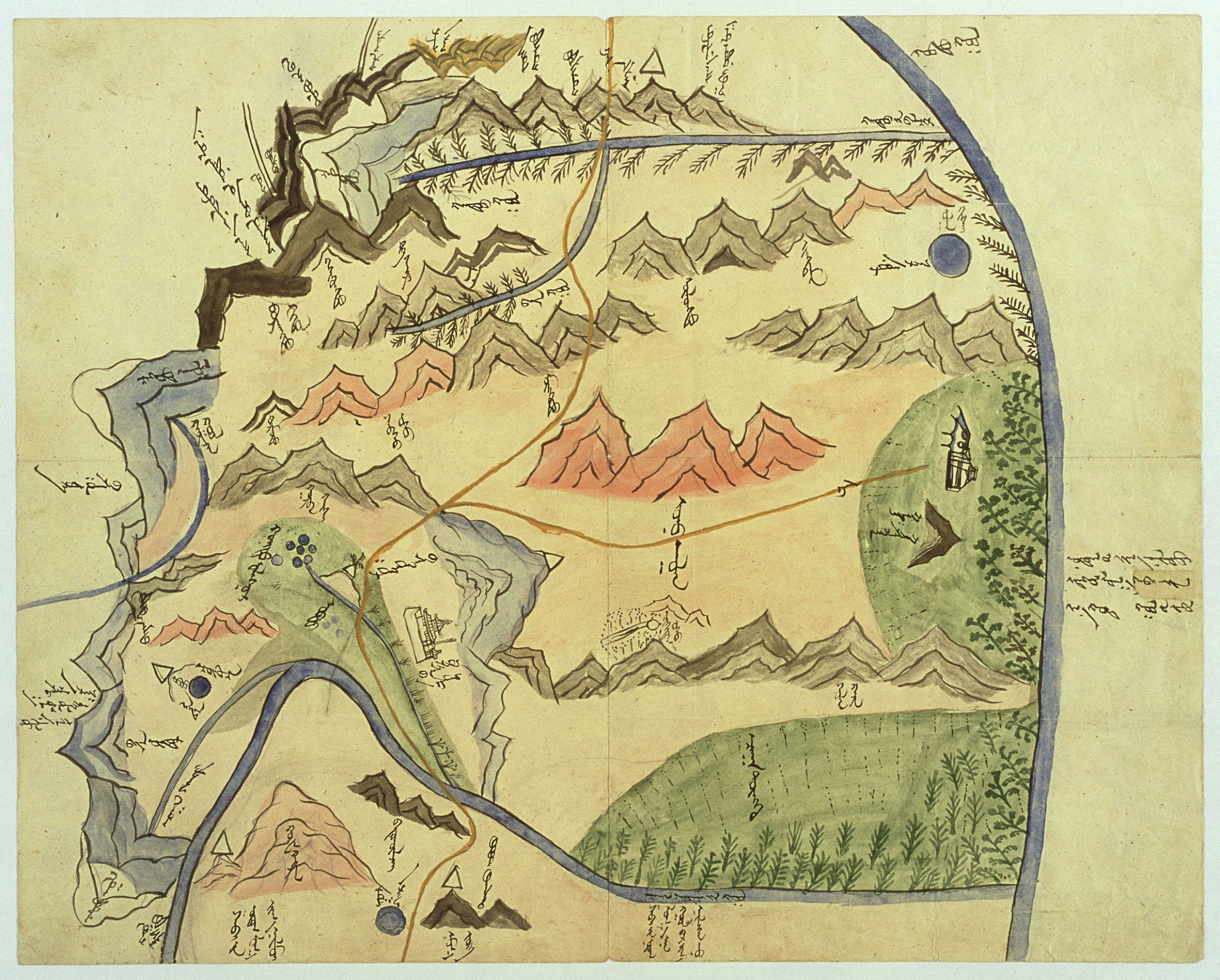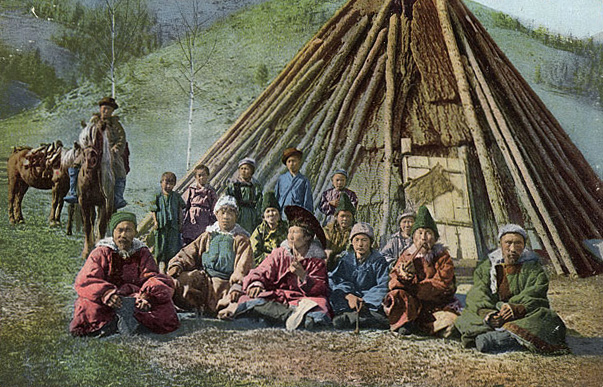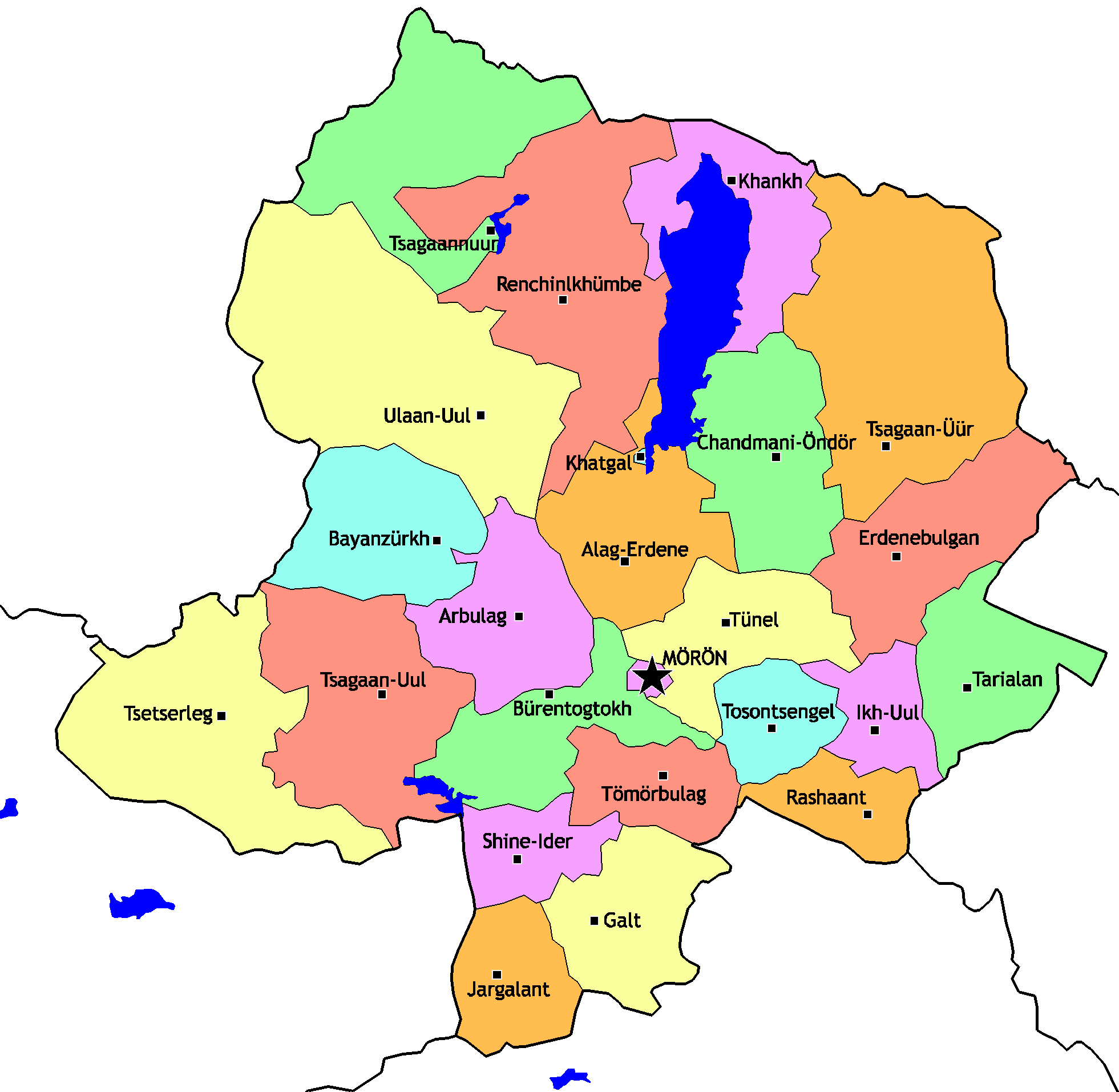|
Altai Uriankhai
The Altai Uriankhai (; ) refers to a Mongol tribe around the Altai Mountains that was organized by the Qing dynasty. They now form a subgroup in western Mongolia and eastern Xinjiang. The Uriankhai people first appeared in the 7th century as one of the people in Mongolia (Legend of the Erkune kun). The Mongolian term ''Uriankhai'' had been applied to all Samoyedic, Turkic, and Mongolic peoples to the north-west of Mongolia in the 17th century. The Uriyangkhai, in this sense, were first subjugated by the Khotgoid, the Khalkha, and then by the Dzungars. In the mid 14th century, they lived in the Liaoyang province of modern China. After the rebellion of the northern Uriankhai people, they were conquered by Dayan Khan in 1538 and mostly annexed by the northern Khalkha. The second group of the Uriankhai people (Uriankhai of the Khentii Mountains) lived in central Mongolia, and they started moving to the Altai Mountains in the beginning of the 16th century.A.Ochir, Ts.Baasan ... [...More Info...] [...Related Items...] OR: [Wikipedia] [Google] [Baidu] |
Oirat Language
Oirat ( Clear script: , ; Kalmyk: , ; Khalkha Mongolian: , ) is a Mongolic language spoken by the descendants of Oirat Mongols, now forming parts of Mongols in China, Kalmyks in Russia and Mongolians. Largely mutually intelligible to other core Central Mongolic languages, scholars differ as to whether they regard Oirat as a distinct language or a major dialect of the Mongolian language. Oirat-speaking areas are scattered across the far west of Mongolia, the northwest of ChinaSečenbaγatur et al. 2005: 396-398 and Russia's Siberia region and Caspian coast, where its major variety is Kalmyk. In China, it is spoken mainly in Xinjiang, but also among the '' Deed Mongol'' of Qinghai and Subei County in Gansu. In all three countries, Oirat has become variously endangered or even obsolescent as a direct result of government actions or as a consequence of social and economic policies. Its most widespread tribal dialect, which is spoken in all of these nations, is Torgut.Svan ... [...More Info...] [...Related Items...] OR: [Wikipedia] [Google] [Baidu] |
Liaoyang Province
Manchuria under Yuan rule refers to the Yuan dynasty's rule over Manchuria, corresponding to modern Manchuria ( Northeast China) and Outer Manchuria (including Sakhalin), from 1271 to 1368. Mongol rule over Manchuria was established after the Mongol Empire's conquest of the Jin dynasty and the Eastern Xia dynasty in the early 13th century. It became a part of the Yuan dynasty of China led by Kublai Khan in 1271. During the Yuan, it was administered as Liaoyang province. Even after the overthrow of the Yuan dynasty by the Ming dynasty in 1368, Manchuria was still controlled by the Northern Yuan dynasty for almost 20 years, until it was conquered by the Ming during its campaign against Naghachu and put under Ming rule. History Conquest of Manchuria In 1211, after the conquest of Western Xia, Genghis Khan, the founder of the Mongol Empire mobilized an army to conquer the Jin dynasty, which controlled much of North China including Manchuria. They successfully destroyed t ... [...More Info...] [...Related Items...] OR: [Wikipedia] [Google] [Baidu] |
Buryat People
The Buryats are a Mongolic peoples, Mongolic ethnic group native to southeastern Siberia who speak the Buryat language. They are one of the two largest indigenous groups in Siberia, the other being the Yakuts. The majority of the Buryats today live in their titular homeland, the Republic of Buryatia, a Federal subjects of Russia, federal subject of Russia which sprawls along the southern coast and partially straddles Lake Baikal. Smaller groups of Buryats also inhabit Ust-Orda Buryat Okrug (Irkutsk Oblast) and the Agin-Buryat Okrug (Zabaykalsky Krai) which are to the west and east of Buryatia respectively as well as northeastern Mongolia and Inner Mongolia, Inner Mongolia, China. Traditionally, they formed the major northern subgroup of the Mongols. Buryats share many customs with other Mongolic peoples, including Nomadic pastoralism, nomadic herding, and erecting Yurt, gers for shelter. Today the majority of Buryats live in and around Ulan-Ude, the capital of the Buryat Republi ... [...More Info...] [...Related Items...] OR: [Wikipedia] [Google] [Baidu] |
Khovd Province
Khovd (; ), alternatively romanized as Khobhd, is one of the 21 aimags (provinces) of Mongolia, located in the west of the country. Its capital is also named Khovd. Khovd province is approximately 1,580 km from Ulaanbaatar, Mongolia's capital. It takes its name from the Khovd River, which is located in this province. Islam is a significant religion practiced by around 10–15% of the population, namely the Kazakhs and a small minority of Uyghurs. Population Khovd is distinguished by its multi-cultural population. It is home to more than 17 nationalities and ethnicities. Each of these groups has its own distinct traditional dwelling and settlement pattern, dress and other cultural distinctions, literary, artistic, and musical traditions. The Khovd aimag population growth stopped in 1991, then migration out of the aimag (approx. 20,000 in 1992-2004) compensated the natural increase and confined aimag's population within the limits of 87 thousand to 92 thousand since. ... [...More Info...] [...Related Items...] OR: [Wikipedia] [Google] [Baidu] |
Amban
Amban (Manchu language, Manchu and Mongolian language, Mongol: ''Amban'', Standard Tibetan, Tibetan: ་''am ben'', zh, t=昂邦, Uyghur language, Uighur:''am ben'') is a Manchu language term meaning "high official" ( zh, t=大臣, p=dàchén), corresponding to a number of different Qing#Bureaucracy, official titles in the imperial government of Qing dynasty, Qing China. For instance, members of the Grand Council (Qing dynasty), Grand Council were called ''Coohai nashūn-i amban'' in the Manchu language and Qing Governor-General (China), governor-generals were called ''Uheri kadalara amban'' (Manchu: ). The most well-known ambans were the Qing imperial Resident (title), residents (Manchu: ''Seremšeme tehe amban''; zh, t=駐紮(劄)大臣 ; Tibetan: ''Ngang pai'') in Tibet under Qing rule, Tibet, Qinghai, Mongolia under Qing rule, Mongolia and Xinjiang under Qing rule, Xinjiang, which were territories of Qing China, but were not governed as regular provinces and retained man ... [...More Info...] [...Related Items...] OR: [Wikipedia] [Google] [Baidu] |
Altai People
The Altai people (, ), also the Altaians (, ), are a Turkic peoples, Turkic ethnic group of indigenous peoples of Siberia mainly living in the Altai Republic, Russia. Several thousand of the Altaians also live in Mongolia (Altai Mountains) and China (Altay Prefecture, Xinjiang) but are Unrecognized ethnic groups in China, not officially recognized as a distinct group and listed under the name "Oirats" as a part of the Mongols, as well as in Kazakhstan where they number around 200. For alternative ethnonyms see also Tiele people, Tele, Qarai Turks, Black Tatar, and Oirats. During the Northern Yuan, Northern Yuan dynasty, they were ruled in the administrative area known as Telengid Province. Ethnic groups and subgroups The Altaians are represented by two ethnographic groups: * The Northern Altaians, who speak the Northern Altai language and dialects, include the Chelkans, Kumandins, and Tubalars (Tuba-Kizhi). * The Southern Altaians, who speak the Southern Altai language with i ... [...More Info...] [...Related Items...] OR: [Wikipedia] [Google] [Baidu] |
Tannu Uriankhai
Tannu Uriankhai (, ; , ; ) was a historical region of the Mongol Empire, its principal successor, the Yuan dynasty, and later the Qing dynasty. The territory of Tannu Uriankhai largely corresponds to the modern-day Tuva Republic of the Russian Federation, neighboring areas in Russia, and a small part of the modern state of Mongolia. ''Tannu'' designates the Tannu-ola Mountains in the region, and '' Uriankhai'' was the Mongolian name for the Tuvans (and accordingly their realm), which meant "the people living in the woods" (). After Mongolia (Outer Mongolia) declared independence from the Qing dynasty and the Republic of China in the early 20th century, the region of Tannu Uriankhai increasingly came under Russian influence and finally became an independent communist state, the Tuvan People's Republic, which was annexed by the Soviet Union in 1944. Sovereignty over the area has not been officially renounced by the Republic of China since 1949. However, the Mainland Affairs Co ... [...More Info...] [...Related Items...] OR: [Wikipedia] [Google] [Baidu] |
Khövsgöl Lake
Khövsgöl may refer to several locations in Mongolia: * Lake Khövsgöl *Khövsgöl Province Khövsgöl () is the northernmost of the 21 Aimags of Mongolia, aimags (provinces) of Mongolia. The name is derived from Lake Khövsgöl. Geography and history The round-topped Tarvagatai (Khangai), Tarvagatai, Bulnain and Erchim sub-ranges of th ... * Khövsgöl sum, in Dornogovi Province {{geodis ... [...More Info...] [...Related Items...] OR: [Wikipedia] [Google] [Baidu] |
Dzungar Khanate
The Dzungar Khanate ( Mongolian: ), also known as the Zunghar Khanate or Junggar Khanate, was an Inner Asian khanate of Oirat Mongol origin. At its greatest extent, it covered an area from southern Siberia in the north to present-day Kyrgyzstan in the south, and from present-day west of Mongolia and the Great Wall of China in the east to present-day Kazakhstan in the west. The core of the Dzungar Khanate is today part of northern Xinjiang, also called Dzungaria. About 1620 the western Mongols, known as the Oirats, united in the Junggar Basin in Dzungaria. In 1678, Galdan received from the Dalai Lama the title of ''Boshogtu Khan'', making the Dzungars the leading tribe within the Oirats. The Dzungar rulers used the title of Khong Tayiji, which translates into English as "crown prince". Between 1680 and 1688, the Dzungars conquered the Tarim Basin, which is now southern Xinjiang, and defeated the Khalkha Mongols to the east. In 1696, Galdan was defeated by the Qing dy ... [...More Info...] [...Related Items...] OR: [Wikipedia] [Google] [Baidu] |
Northern Yuan Dynasty
The Northern Yuan was a dynastic state ruled by the Mongol Borjigin clan based in the Mongolian Plateau. It existed as a rump state after the collapse of the Yuan dynasty in 1368 and lasted until its conquest by the Jurchen people, Jurchen-led Later Jin (1616–1636), Later Jin dynasty in 1635. The Northern Yuan dynasty began with the retreat of the Yuan imperial court led by Toghon Temür (Emperor Huizong of Yuan) to the Mongolian steppe. This period featured factional struggles and the often only nominal role of the Khagan, Great Khan. Dayan Khan and Mandukhai Khatun reunited most Mongol tribes in the late 15th century. However, the former's distribution of his empire among his sons and relatives as fiefs caused the decentralization of the List of Mongol rulers#Northern Yuan dynasty (1368–1634), imperial rule. Despite this decentralization, a remarkable concord continued within the Dayan Khanid aristocracy, and Borjigin, intra-Chinggisid civil war remained unknown until the ... [...More Info...] [...Related Items...] OR: [Wikipedia] [Google] [Baidu] |
Khövsgöl Province
Khövsgöl () is the northernmost of the 21 Aimags of Mongolia, aimags (provinces) of Mongolia. The name is derived from Lake Khövsgöl. Geography and history The round-topped Tarvagatai (Khangai), Tarvagatai, Bulnain and Erchim sub-ranges of the Khangai Mountains, Khangai massif dominate the south and southwest of the largely mountainous province, and north and west of Lake Khövsgöl, lie the alpine Khoridol Saridag mountains, Khoridol Saridag, Ulaan Taiga, and Mönkh Saridag mountains. The center and eastern parts of the province are less mountainous, but still hilly. The region is well known in Mongolia for its natural environment, and Lake Khövsgöl is one of the country's major tourist attractions. The largest forests of Mongolia are located around and to the north of the lake, extending the South Siberian forest steppe, South Siberian taiga. The aimag was founded in 1931. Khatgal, Khövsgöl, Khatgal was the administrative center until 1933; since then it has been Mörö ... [...More Info...] [...Related Items...] OR: [Wikipedia] [Google] [Baidu] |








